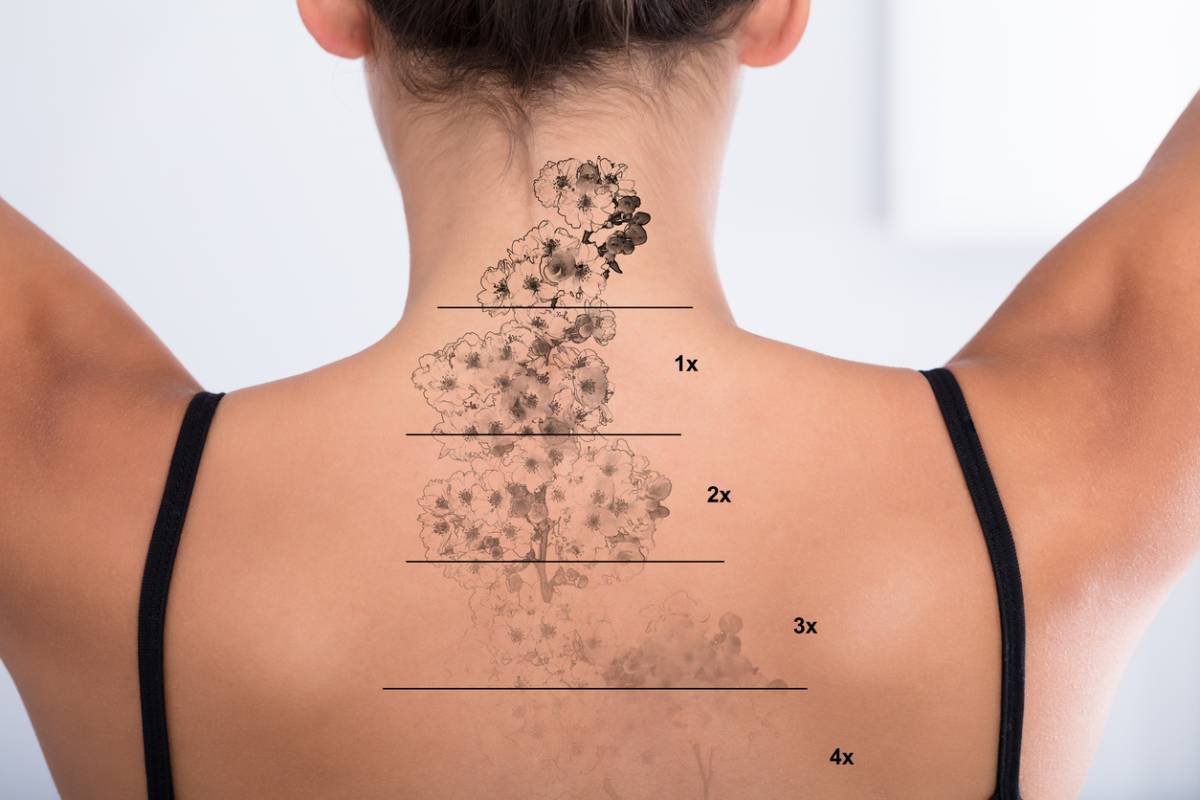A Brazilian Butt Lift (BBL) is a very popular cosmetic procedure that enhances the appearance of the buttocks. It can improve your butt’s size and shape without implants. Rather, your surgeon will transfer fat from other parts of your body—most often, your hips, lower back, abdomen, or thighs—to your buttocks. The surgeon will then strategically inject the removed fat into your buttocks to enhance its size and shape. A skilled surgeon can provide amazing BBL results safely and effectively, but you can ensure the very best results by taking steps to prepare for the procedure. Below you will find helpful information on how to prepare for a Brazilian butt lift.
How to Prepare for a Brazilian Butt Lift
Deciding to get a Brazilian butt lift is exciting. Many people are unhappy with the size and shape of their butt, but a BBL can enhance your buttocks and boost your self-confidence. How you spend the time leading up to your BBL will have a major impact on your results. As you navigate the process, consider the following information to ensure an effortless experience.
Schedule a Consultation
The first step in moving forward with a BBL is setting up a consultation with a skilled plastic surgeon. Be sure to only consider plastic surgeons who are board-certified and experienced in the procedure. Choosing a highly qualified surgeon will ensure your health and safety throughout the entire process. During the consultation, the plastic surgeon will evaluate your health, discuss your aesthetic goals, and explain the procedure. You can and should ask any questions you have during this appointment.
Candidates for the procedure should be in good overall health. Good health is necessary prior to surgery to ensure the success of your procedure and the longevity of your results for years to come. Prospective patients should also have realistic expectations going into the operation. Because plastic surgery involves a fat transfer from your own body, you should be near your goal weight before you undergo the process. Once your surgeon has determined you are a good candidate, you can move forward with scheduling the procedure.
Before Your Brazilian Butt Lift
There are several measures you should take before your BBL surgery. Implement the following as you get closer to your surgery date. These practices are necessary to ensure that you are healthy and prepared for the surgery and recovery period.
Lifestyle Habits
Your health prior to the surgery will impact your health both during and after the procedure. Being as healthy as possible before the procedure is critical. Be sure to eat a balanced diet filled with nutrient-dense foods. Specifically, focus on whole foods rich in vitamins and minerals. In addition to eating a healthy diet, drink lots of water. Staying hydrated is beneficial for your overall health.
Incorporate exercise into your routine. It is recommended that adults get at least 150 minutes of moderate physical activity each week. The exercise you engage in can be anything from walking to exercise classes; just make sure you find something you like so you will stick to it. It is also important to avoid smoking and alcohol as both can increase your risk for complications during the procedure and your healing afterward. If you do not quit both entirely, it is advisable to stop at least 4 weeks in advance of your procedure. Be sure to let your surgeon know what substances you regularly use. They need to have this information to ensure they do not give you anything that will negatively interact with those substances.
Manage Your Weight
The plastic surgeon will advise you on the ideal weight you should achieve before surgery. Depending on your goals, they may recommend that you gain or lose weight prior to your operation. If your doctor does not recommend any changes to your weight, maintain your weight as best as possible. Weigh yourself regularly to be sure you are on track.
Managing your weight will involve a combination of diet and exercise. Nevertheless, keep in mind that other factors can impact your weight. Cortisol, for instance, is a stress hormone that can impact your weight goals. Focus on managing your stress levels to keep your cortisol at a healthy level. It is also important to get enough rest. Focus on getting at least 7 to 9 hours of quality sleep each night. Combining these and other healthy lifestyle habits is crucial to the success of your BBL.
Prepare Your Body
Maintaining your weight and living a healthy lifestyle well in advance of your surgery will benefit your overall wellness and your BBL procedure. In the weeks immediately before your surgery, there are additional steps you can take to prepare your body.
One action you can take to prepare your body for surgery is to increase your protein intake. One to two weeks before surgery, consume between 65 to 100 grams of protein each day. Proteins are necessary for tissue repair and recovery. Thus, increasing your protein intake will ensure a much smoother recovery process. It can also help boost your immune system. Pay close attention to your diet in the weeks before your surgery.
Care For Your Skin
The healthier your skin is going into surgery, the better. Surgery will cause some trauma to the skin, and caring for it in advance can help with the healing process. It is also helpful for creating a suitable environment for the fat transfer. Healthy skin will reduce the risk and appearance of hyperpigmentation and scarring post-surgery. Being proactive about your skincare before your surgery is key.
Hydrating is one of the best and easiest ways to improve the health of your skin. Drink at least eight glasses of water each day. In addition to hydrating, exfoliate your skin to remove dead cells. Exfoliating will be especially beneficial in the areas where the liposuction and fat transfer will be performed. Using products that boost collagen and hydrate your skin after exfoliating is another helpful tip. Use at least SPF 30 daily to avoid sun damage. Talk with your surgeon about any other recommendations they have in regard to skincare.
Plan For Your Recovery
How you spend your recovery period will have a significant impact on the quality of your results. Most surgeons recommend taking at least two to three weeks off after a Brazilian butt lift. Make sure to rest as much as possible so you can expedite your recovery.
Talk with friends and family before your surgery to ask for help post-surgery. Having people to physically support you after surgery is necessary for optimal recovery. Specifically, you will need someone to drive you home and care for you for at least the first week. This care will include helping you take your prescribed medications and preparing your meals. Rest is the most important priority when you get out of surgery. Enlist and schedule as much help from friends and family as possible.
Organize Recovery Supplies
Recovering from a BBL takes time and patience. In addition to taking time off work and getting help from trusted friends and family, stock up on what you need beforehand. Be sure to prepare recovery supplies—such as compression garments, pillows, and medication—and a space in your home where you will be able to comfortably rest afterward. Make sure that your recovery area is clean and comfortable.
It is also advisable to prepare meals in advance. Healthy meals filled with lean proteins, fruits, vegetables, and whole grains can strengthen you during the recovery process. You will be staying home for a while during the beginning of the recovery process. Plan what you want to watch or read so you have entertainment ready. Doing all of the preparation in advance can make the recovery process a stress-free experience.
Follow Your Surgeon’s Pre-Operative Instructions
Your surgeon will provide you with instructions before surgery. You may get this information at the consultation or a later date. Be sure to read the instructions carefully and in their entirety. Each surgical procedure is unique, so it is important to ask questions if you are unclear about anything.
You will likely need to adjust your current medications. Surgeons commonly advise patients to avoid taking blood thinners and herbal supplements prior to surgery. That said, always be sure to speak with your doctor before stopping any of your prescribed medications. In the time immediately before surgery, you will likely need to fast. Follow your surgeon’s instructions on when to stop eating and drinking. Be sure to wear comfortable clothing and shower before surgery.
The Night Before and Day Of Surgery
Prepare for the day of the surgery the night before. In particular, you should set out the clothes you will wear on your way to surgery, prepare a bag of anything you may want or need for the next day, and confirm your check-in time and the address of the surgical location. If possible, have the person driving you to the appointment stay the night with you. Taking these steps ahead of time can relieve a lot of stress and ensure you get to your appointment on time. Be sure to go to bed early. A good night’s rest will do wonders before a cosmetic procedure.
The day of the procedure can be stressful, so be sure to wake up with enough time to avoid rushing and arrive on time for your surgery. Aim to arrive at least 15 minutes early, as you will need to check in and complete paperwork.
Brazilian Butt Lift Procedure
If you are interested in a BBL, contact the team at Gabbay Plastic Surgery today to schedule a consultation!









